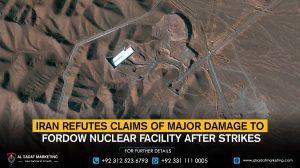Iran’s retaliatory attacks on a US air base in Qatar caused new disruptions to air travel throughout the Middle East, compounding the existing regional instability that affects airline operations.
Airlines were forced to cancel, reroute, or divert flights as a result of many Middle Eastern nations temporarily closing their airspace. For the most recent travel information, passengers whose itineraries pass through the area are encouraged to keep up with their airlines.
Following the restoration of Qatari airspace, Qatar Airways reported that it has started operating flights to and from Hamad International Airport again. In a similar vein, Dubai Airports declared that following a brief precautionary pause, full operations had now resumed.
Nonetheless, there are still significant inconveniences for certain carriers. Due to the changing circumstances, Air India declared that all flights to the Middle East and to and from the east coast of North America and Europe would be suspended till further notice.
Additionally, Singapore Airlines canceled its June 24 and 25 flights from Singapore to Dubai. Qantas, an Australian airline, stated that its June 24 flights between Australia and Europe are proceeding according to schedule.
Conflict-driven disruptions like this have become commonplace for the world’s aviation business, according to experts.
According to aviation analyst Brendan Sobie, who is located in Singapore, “airlines have teams that are always monitoring airspace and assessing risk.” “Some airlines may decide to reroute even though airspace is technically open because they believe it to be unsafe.”
As geopolitical tensions continue to influence international travel patterns, the scenario emphasizes the growing need for adaptability and quick thinking in the aviation industry.










